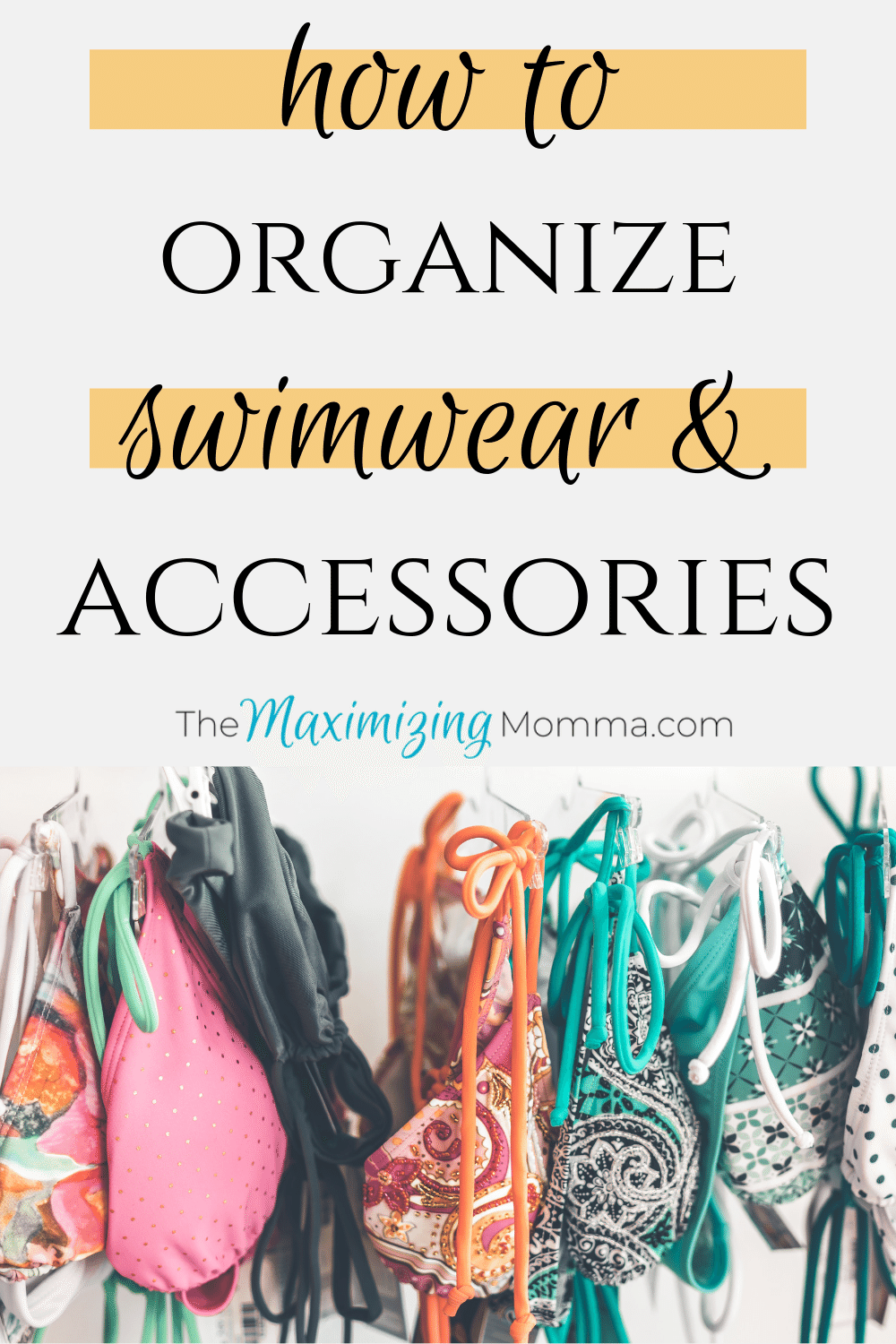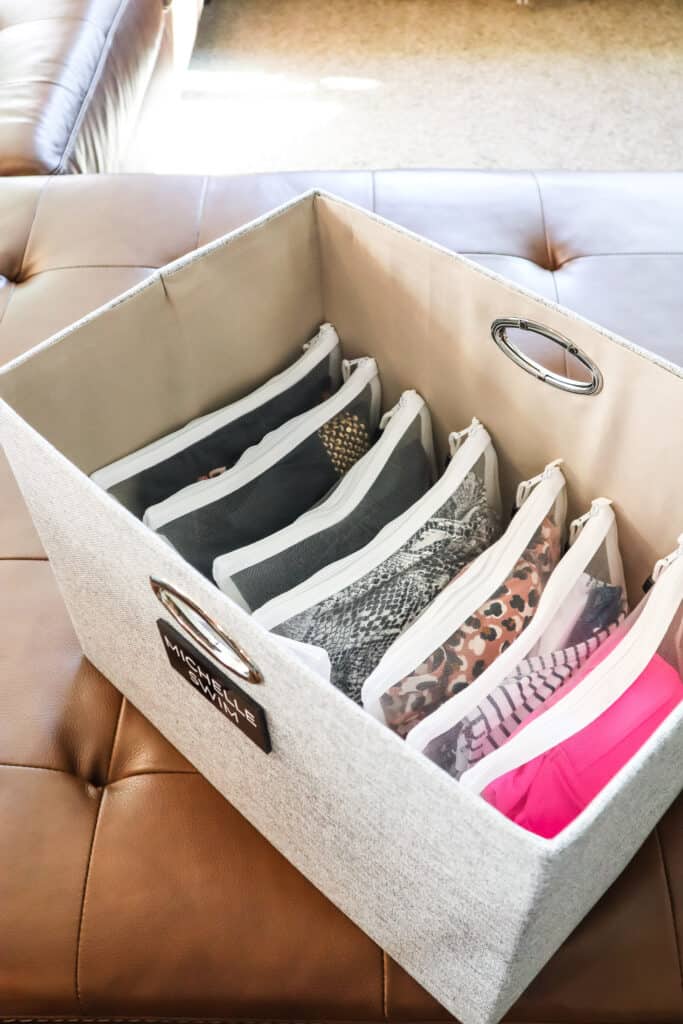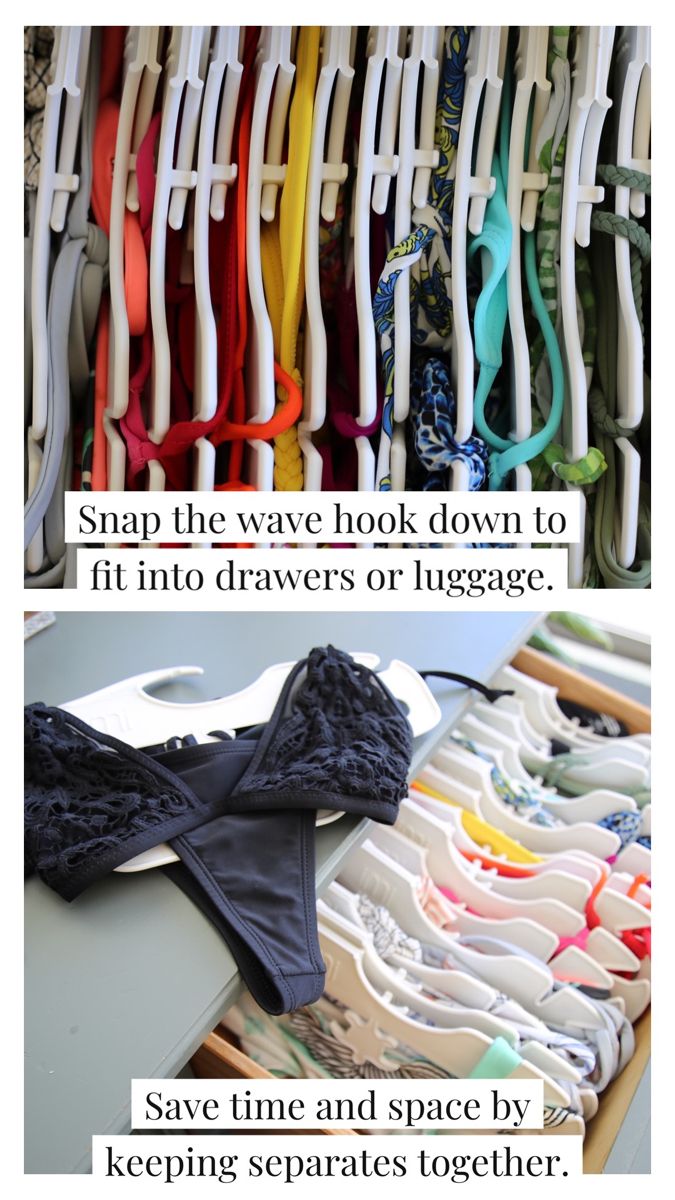Content Menu
● Why Proper Swimsuit Organization Matters
● Assessing Your Swimwear Collection
● Cleaning and Preparing Swimsuits for Storage
● Organizing Methods for Swimsuits
>> 1. Hanging Method
>> 2. Drawer Organization
>> 3. Storage Containers
>> 4. Vacuum-Sealed Bags
>> 5. Hooks and Pegs
● Maximizing Closet Space for Swimwear
● Organizing Swimwear Accessories
● Seasonal Rotation and Storage
● Maintaining Your Organized Swimwear System
● Creative Display Ideas
● Conclusion
As the warm weather approaches and beach days beckon, it's time to turn our attention to an often-overlooked aspect of wardrobe organization: swimsuit storage. Whether you're a casual beachgoer or a dedicated swimmer, having a well-organized system for your swimwear can save you time, frustration, and even extend the life of your favorite suits. In this comprehensive guide, we'll explore various methods and tips for organizing swimsuits in your closet, ensuring that you're always ready for a splash of summer fun.
Why Proper Swimsuit Organization Matters
Before we dive into the specifics of organization, it's essential to understand why proper swimsuit storage is crucial. Swimwear is often made from delicate materials that can easily stretch, fade, or become damaged if not cared for properly. By implementing an effective organization system, you'll not only protect your investment but also streamline your routine when it's time to hit the pool or beach.

Assessing Your Swimwear Collection
The first step in organizing your swimsuits is to take stock of what you have. Lay out all your swimwear and assess each piece:
1. Condition Check: Examine each swimsuit for signs of wear, fading, or damage. This is an excellent opportunity to decide which suits may need to be replaced or repaired.
2. Categorize: Sort your swimwear by type (one-piece, bikini, tankini, etc.), usage (casual beach days, lap swimming, water sports), or color. This will help you determine the best organization method for your needs.
3. Frequency of Use: Consider how often you wear each suit. Frequently used items should be easily accessible, while seasonal or special occasion swimwear can be stored more compactly.
Cleaning and Preparing Swimsuits for Storage
Before organizing your swimsuits, it's crucial to ensure they're clean and properly dried. Here's a quick guide:
1. Rinse thoroughly: After each use, rinse your swimsuit in cool, fresh water to remove chlorine, salt, and other chemicals that can damage the fabric.
2. Hand wash: Use a mild detergent specifically designed for delicate fabrics or swimwear. Gently hand wash your suits, paying special attention to areas that may accumulate oils or sunscreen.
3. Avoid wringing: Instead of twisting or wringing your swimsuit, gently squeeze out excess water.
4. Air dry: Lay your swimsuit flat on a towel or hang it in a well-ventilated area away from direct sunlight. Avoid using a dryer, as the heat can damage the elastic fibers.
Once your swimsuits are clean and completely dry, you're ready to organize them in your closet.

Organizing Methods for Swimsuits
There are several effective ways to organize your swimsuits, depending on your available space and personal preferences. Let's explore some popular methods:
1. Hanging Method
Hanging your swimsuits is an excellent option if you have available closet space. This method allows your suits to maintain their shape and prevents creasing.
◆ Use padded hangers or specialized swimsuit hangers to avoid stretching the fabric.
◆ For bikinis, you can use skirt hangers with clips to keep the tops and bottoms together.
◆ Consider using a hanging organizer with multiple compartments to separate different styles or colors.
2. Drawer Organization
If you prefer to store your swimsuits in a dresser or closet drawers, proper folding and organization are key.
◆ Fold one-piece suits in half lengthwise, then fold in thirds or quarters.
◆ For bikinis, fold the bottoms in thirds, then place the folded top on top of the bottoms.
◆ Use drawer dividers to create separate sections for different types of swimwear.
◆ Consider rolling your swimsuits instead of folding to save space and reduce creasing.

3. Storage Containers
Clear storage containers or boxes can be an excellent solution for organizing swimsuits, especially if you have limited closet space.
◆ Use clear, breathable containers to easily see your swimwear and prevent moisture buildup.
◆ Sort swimsuits by type, color, or occasion in separate containers.
◆ Label the containers for quick identification.
◆ Stack the containers in your closet or under the bed for efficient use of space.
4. Vacuum-Sealed Bags
For long-term storage or to save space during the off-season, vacuum-sealed bags can be a great option.
◆ Ensure swimsuits are completely dry before sealing.
◆ Fold or roll swimsuits neatly to prevent creasing.
◆ Use this method for suits you don't wear frequently, as constant unpacking and repacking can be time-consuming.
5. Hooks and Pegs
Installing hooks or pegs in your closet or on a wall can provide a simple and accessible storage solution.
◆ Use decorative hooks to create a visually appealing display of your swimwear.
◆ Group similar styles or colors together for easy selection.
◆ This method is particularly useful for frequently worn suits or those that need to air dry after use.

Maximizing Closet Space for Swimwear
When organizing swimsuits in your closet, consider these tips to maximize your available space:
1. Utilize Vertical Space: Install additional rods or use hanging organizers to take advantage of vertical space in your closet.
2. Door Storage: Over-the-door organizers or hooks can provide extra storage without taking up valuable closet real estate.
3. Shelf Dividers: Use shelf dividers to create separate sections for different types of swimwear on existing closet shelves.
4. Repurpose Shoe Organizers: Hanging shoe organizers with clear pockets can be repurposed to store rolled swimsuits and accessories.
5. Magnetic Strips: Install magnetic strips on the inside of your closet door to hold small metal accessories like removable straps or decorative clips.
Organizing Swimwear Accessories
Don't forget about your swimwear accessories when organizing your closet. Here are some ideas for keeping everything together:
1. Use small, clear containers or pouches to store items like removable padding or straps.
2. Keep beach cover-ups and sarongs on hangers near your swimsuits for easy coordination.
3. Store swim caps, goggles, and other small accessories in labeled bins or baskets.
4. Use a jewelry organizer or small compartment box for delicate items like decorative clips or charms.
Seasonal Rotation and Storage
As seasons change, so should your swimwear organization. Here's how to manage seasonal rotation:
1. Off-Season Storage: At the end of summer, clean and properly store away swimsuits you won't be using for a while. Use breathable garment bags or storage containers and place them in a cool, dry area of your closet or under the bed.
2. Keep Year-Round Essentials Accessible: If you swim regularly or have access to indoor pools, keep a few essential suits easily accessible throughout the year.
3. Rotate Your Collection: As you bring out stored swimwear at the beginning of the season, take the opportunity to reassess your collection. Donate or discard suits that no longer fit or are past their prime.

Maintaining Your Organized Swimwear System
Once you've established your preferred organization method, maintaining the system is key to long-term success:
1. Regular Cleaning: Clean your swimsuits after each use and before storing them away for extended periods.
2. Quick Dry Routine: Establish a routine for drying swimsuits quickly after use to prevent mildew and maintain organization.
3. Periodic Review: Every few months, review your swimwear collection and organization system. Make adjustments as needed and discard any damaged items.
4. One In, One Out Rule: Consider implementing a "one in, one out" rule when purchasing new swimwear to prevent overcrowding.
5. Educate Family Members: If you share your closet or swimwear with family members, teach them the organization system to maintain order.
Creative Display Ideas
For those who want to add a touch of style to their swimwear organization, consider these creative display ideas:
1. Decorative Ladder: Use a decorative ladder to hang swimsuits and beach towels, creating a charming beach-inspired corner in your bedroom.
2. Vintage Suitcases: Store swimwear in vintage suitcases for a trendy, travel-inspired look. Stack them in your closet or use them as decorative pieces in your room.
3. Pegboard Display: Install a pegboard in your closet or dressing area to create a customizable display for your swimwear and accessories.
4. Glass Jars: Store rolled swimsuits in large, decorative glass jars for a unique and visually appealing storage solution.
5. Floating Shelves: Install floating shelves in your closet or bathroom to display neatly folded swimsuits and accessories.
Conclusion
Organizing your swimsuits in your closet doesn't have to be a daunting task. By implementing these strategies and finding the method that works best for you, you'll create a system that not only keeps your swimwear in great condition but also makes selecting the perfect suit a breeze. Remember, the key to successful organization is consistency and periodic maintenance. With your swimsuits neatly arranged and easily accessible, you'll be ready to dive into summer fun at a moment's notice. So, take the plunge and transform your swimwear storage today – your future self will thank you when it's time to hit the beach or pool!




































































